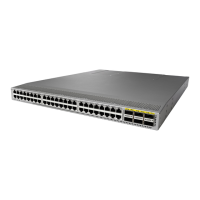CHAPTER 16
Configuring DNS
This chapter contains the following sections:
• Information About DNS Client , on page 173
• Prerequisites for DNS Clients, on page 174
• Licensing Requirements for DNS Clients, on page 174
• Default Settings for DNS Clients, on page 174
• Configuring DNS Clients, on page 174
Information About DNS Client
If your network devices require connectivity with devices in networks for which you do not control name
assignment, you can assign device names that uniquely identify your devices within the entire internetwork
using the domain name server (DNS). DNS uses a hierarchical scheme for establishing hostnames for network
nodes, which allows local control of the segments of the network through a client-server scheme. The DNS
system can locate a network device by translating the hostname of the device into its associated IP address.
On the Internet, a domain is a portion of the naming hierarchy tree that refers to general groupings of networks
based on the organization type or geography. Domain names are pieced together with periods (.) as the
delimiting characters. For example, Cisco is a commercial organization that the Internet identifies by a com
domain, so its domain name is cisco.com. A specific hostname in this domain, the File Transfer Protocol
(FTP) system, for example, is identified as ftp.cisco.com.
Name Servers
Name servers keep track of domain names and know the parts of the domain tree for which they have complete
information. A name server may also store information about other parts of the domain tree. To map domain
names to IP addresses in Cisco NX-OS, you must first identify the hostnames, then specify a name server,
and enable the DNS service.
Cisco NX-OS allows you to statically map IP addresses to domain names. You can also configure Cisco
NX-OS to use one or more domain name servers to find an IP address for a hostname.
DNS Operation
A name server handles client-issued queries to the DNS server for locally defined hosts within a particular
zone as follows:
Cisco Nexus 3548 Switch NX-OS System Management Configuration Guide, Release 7.x
173

